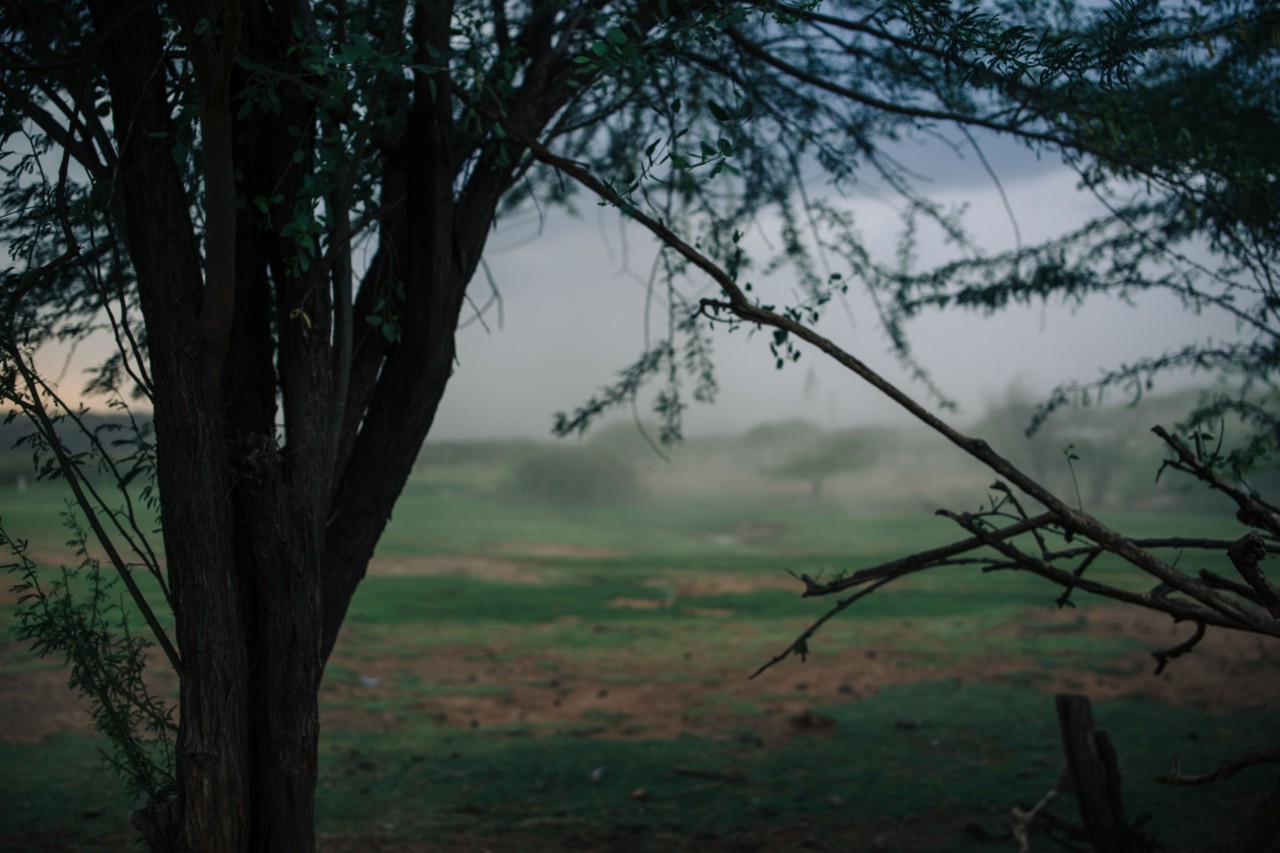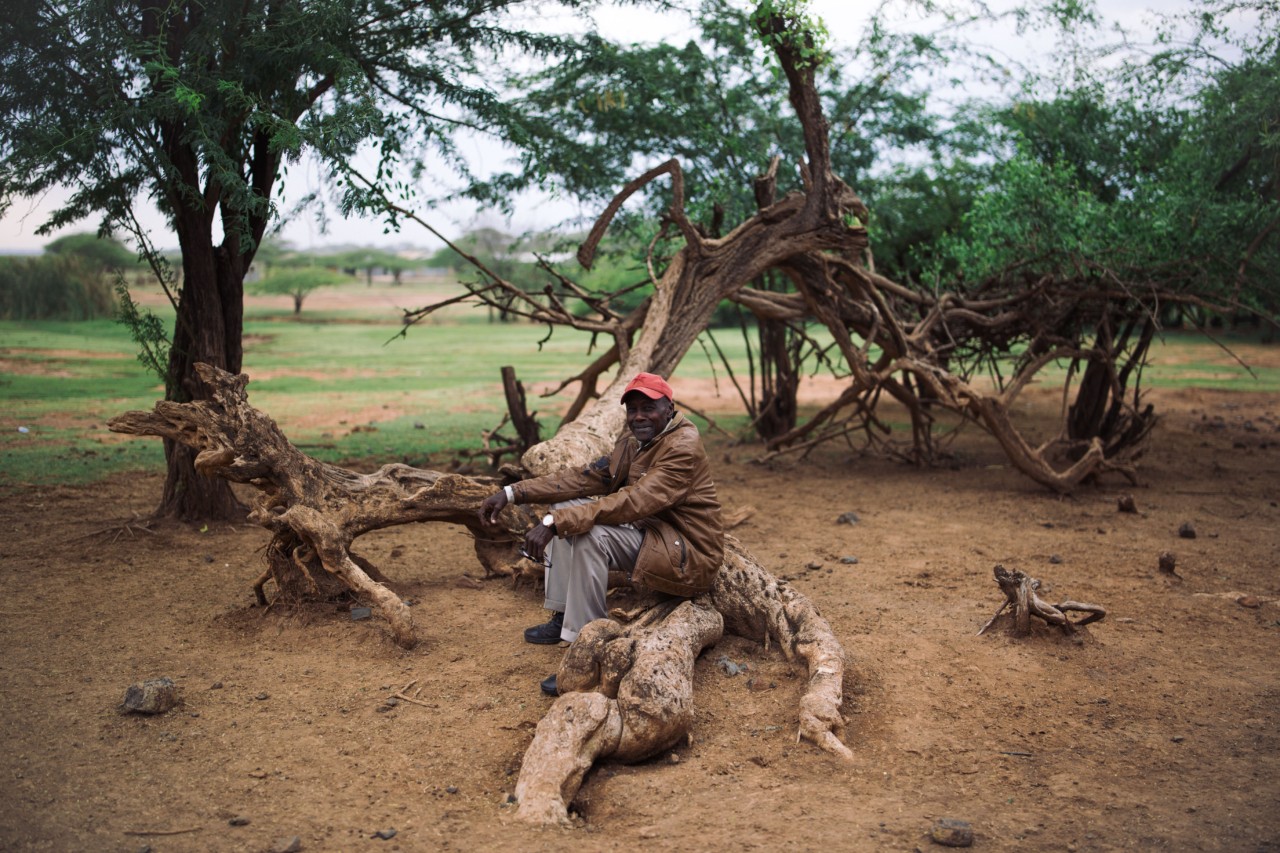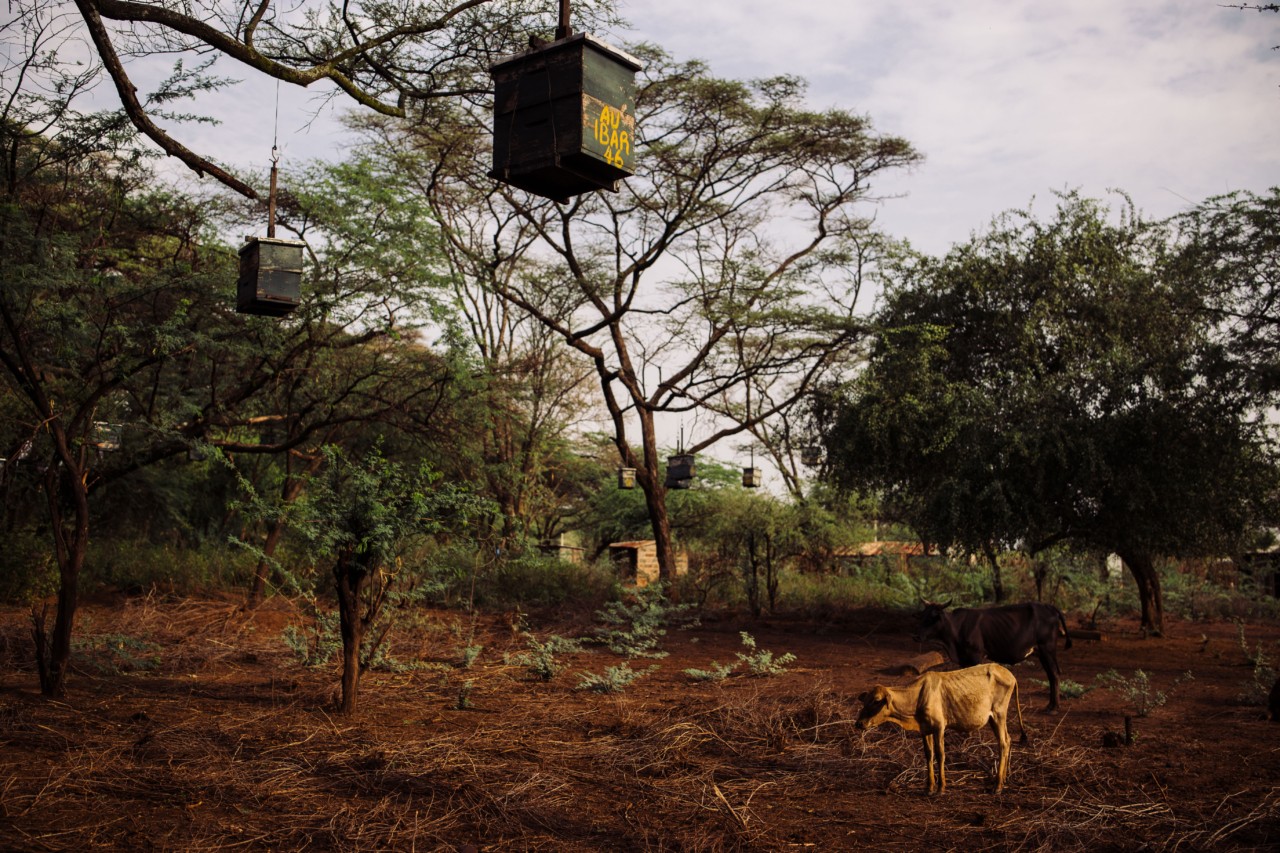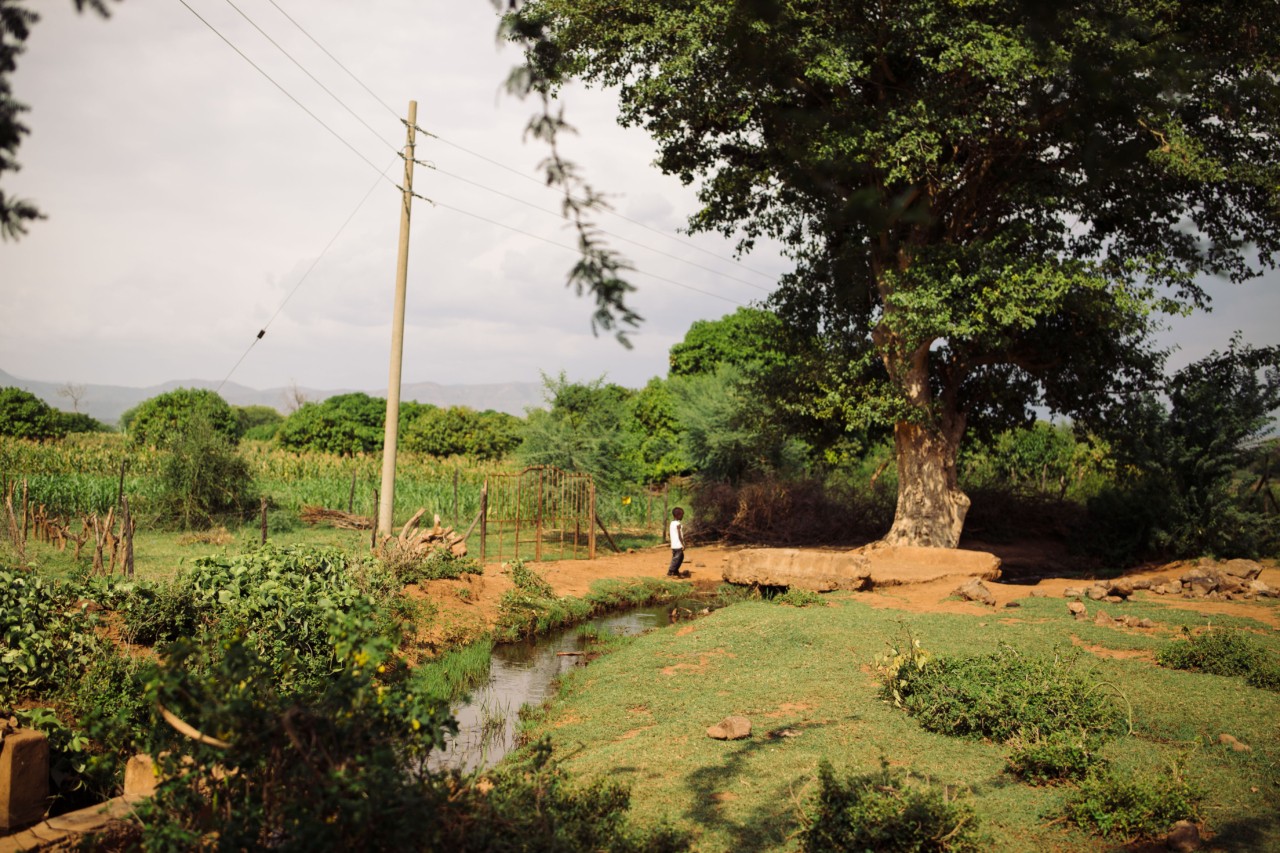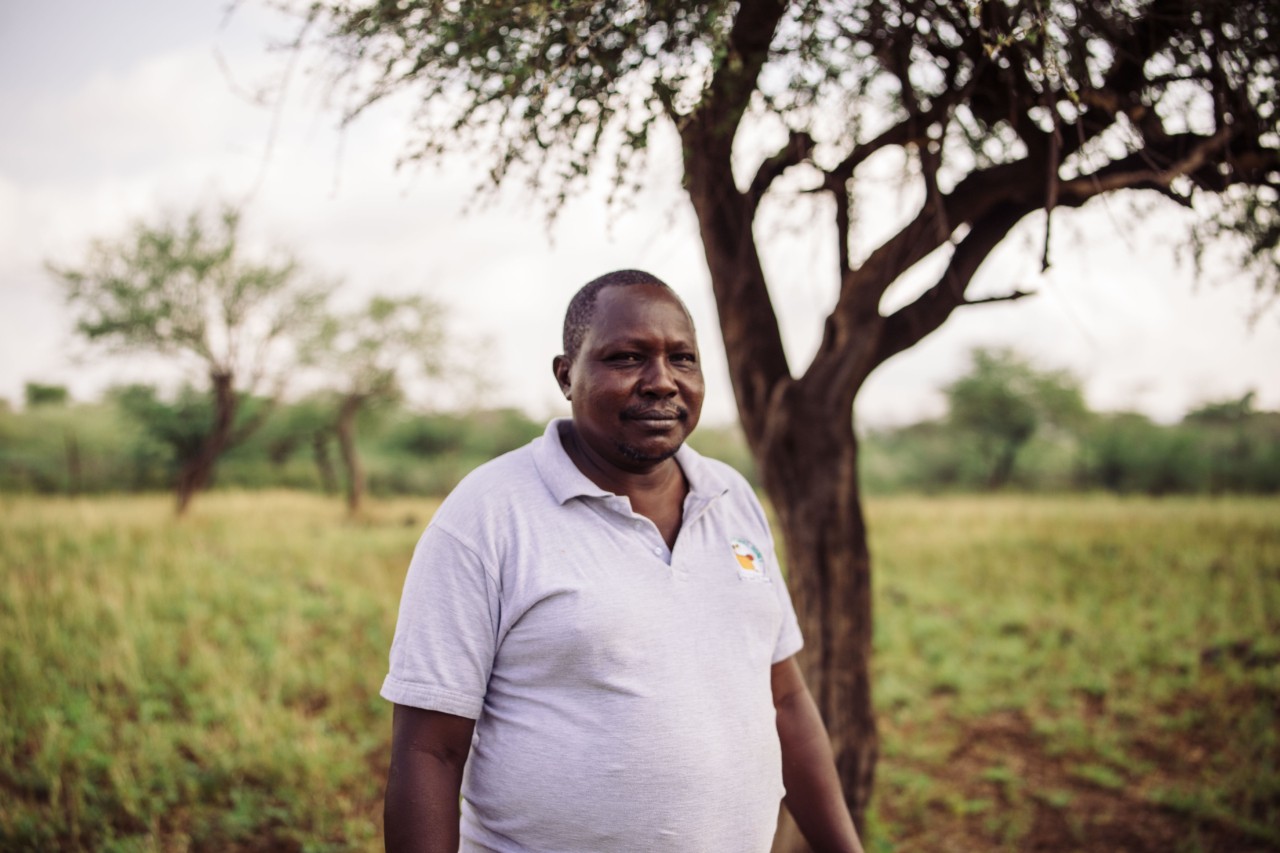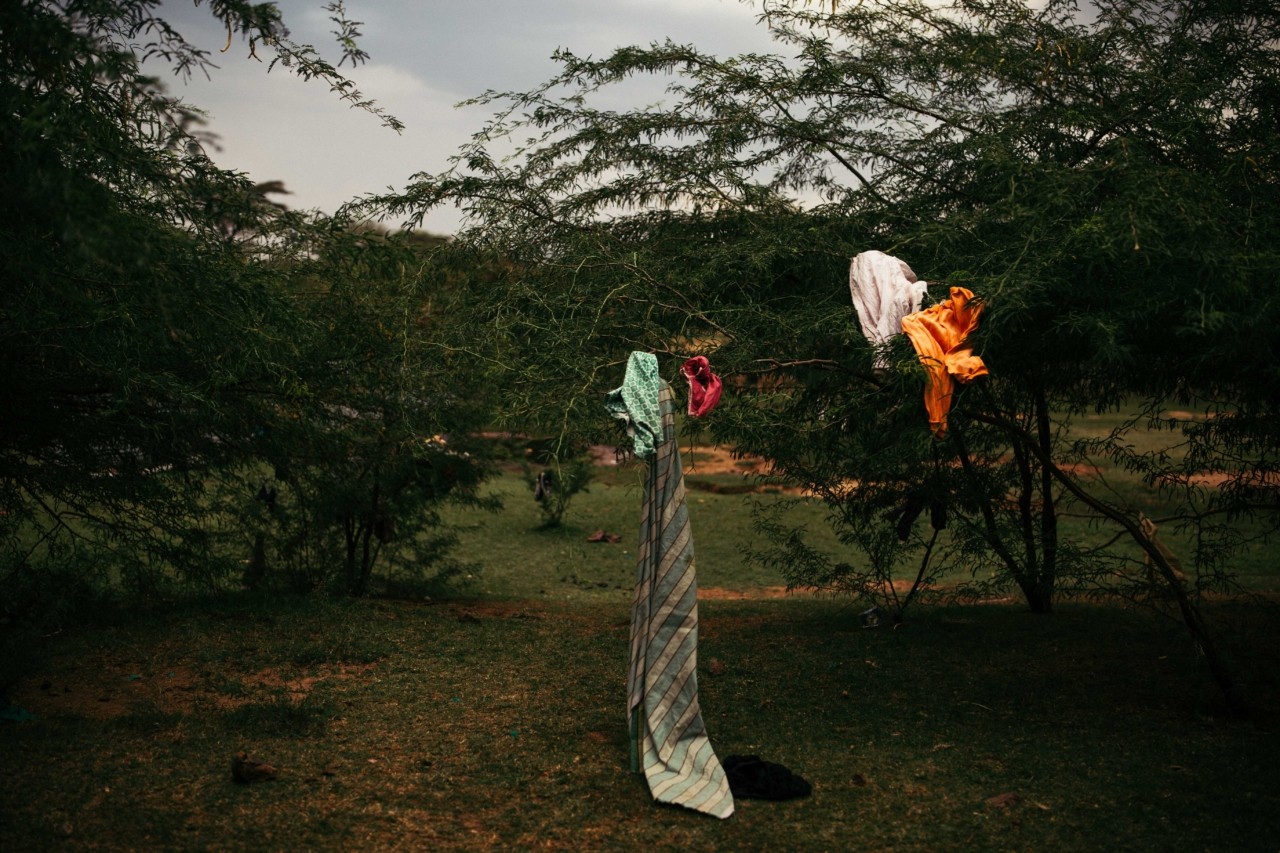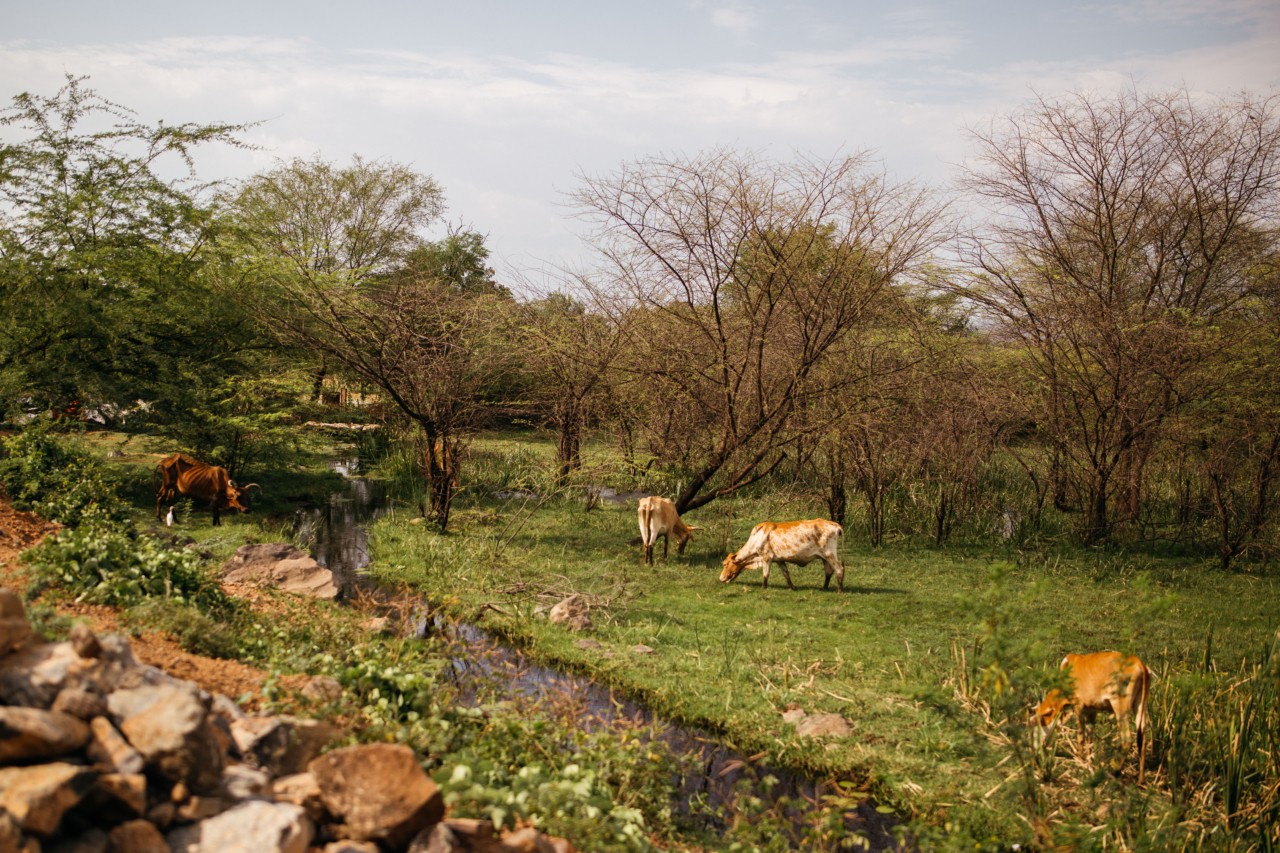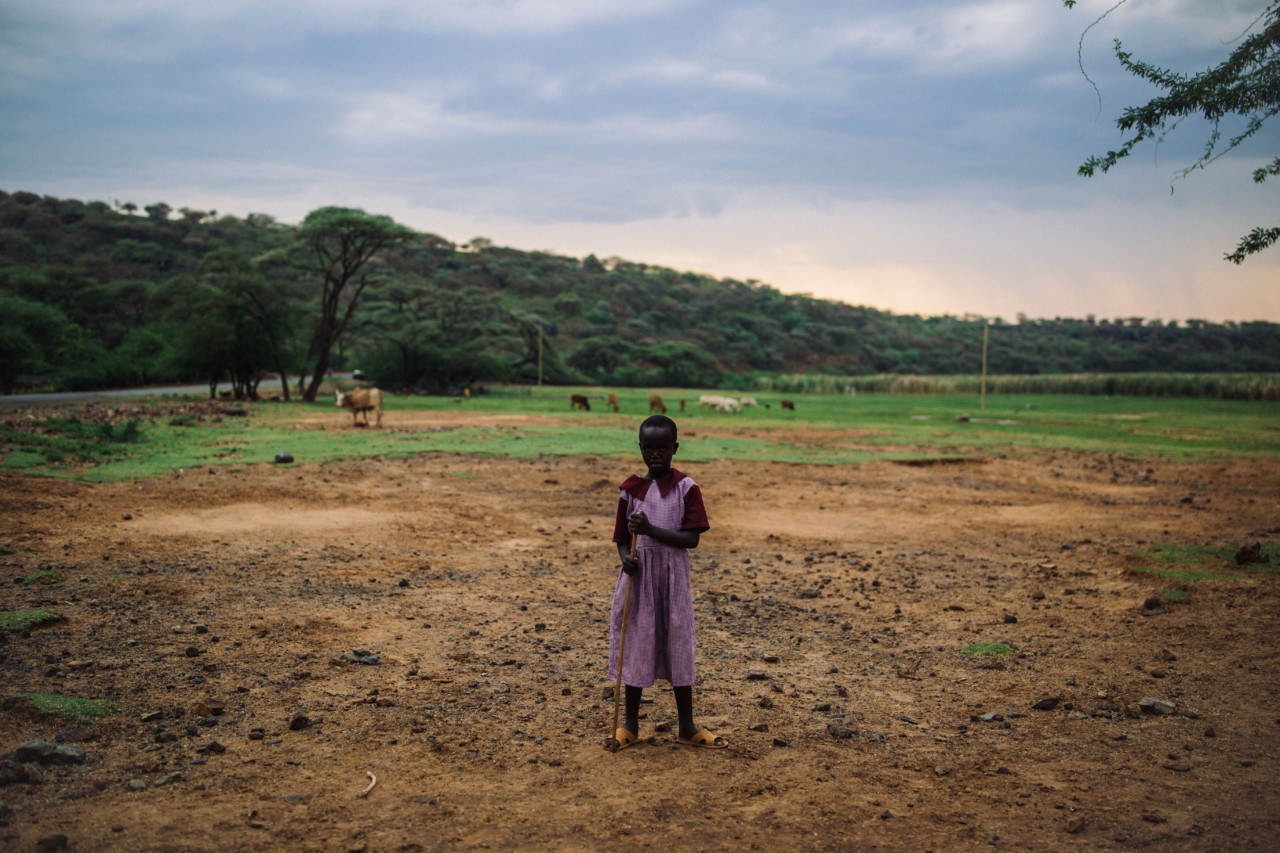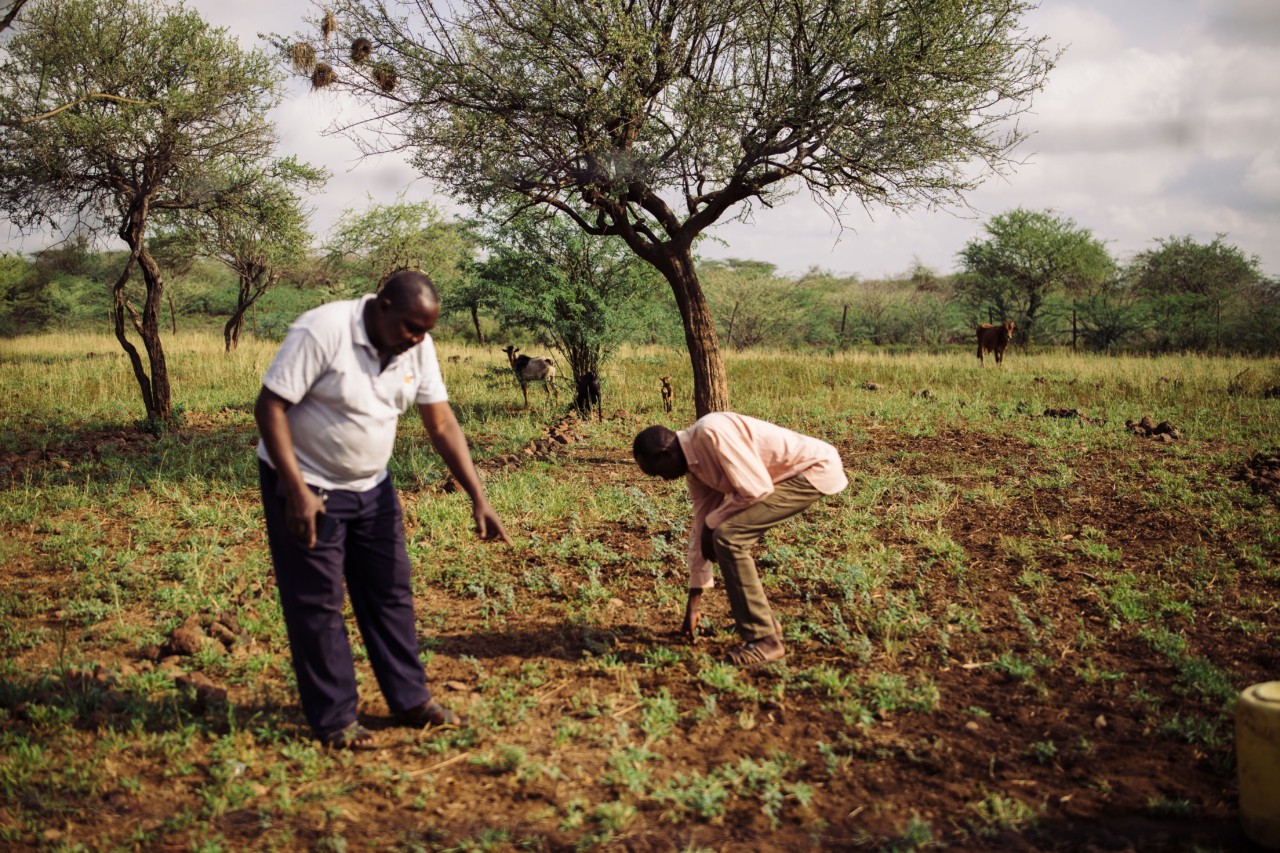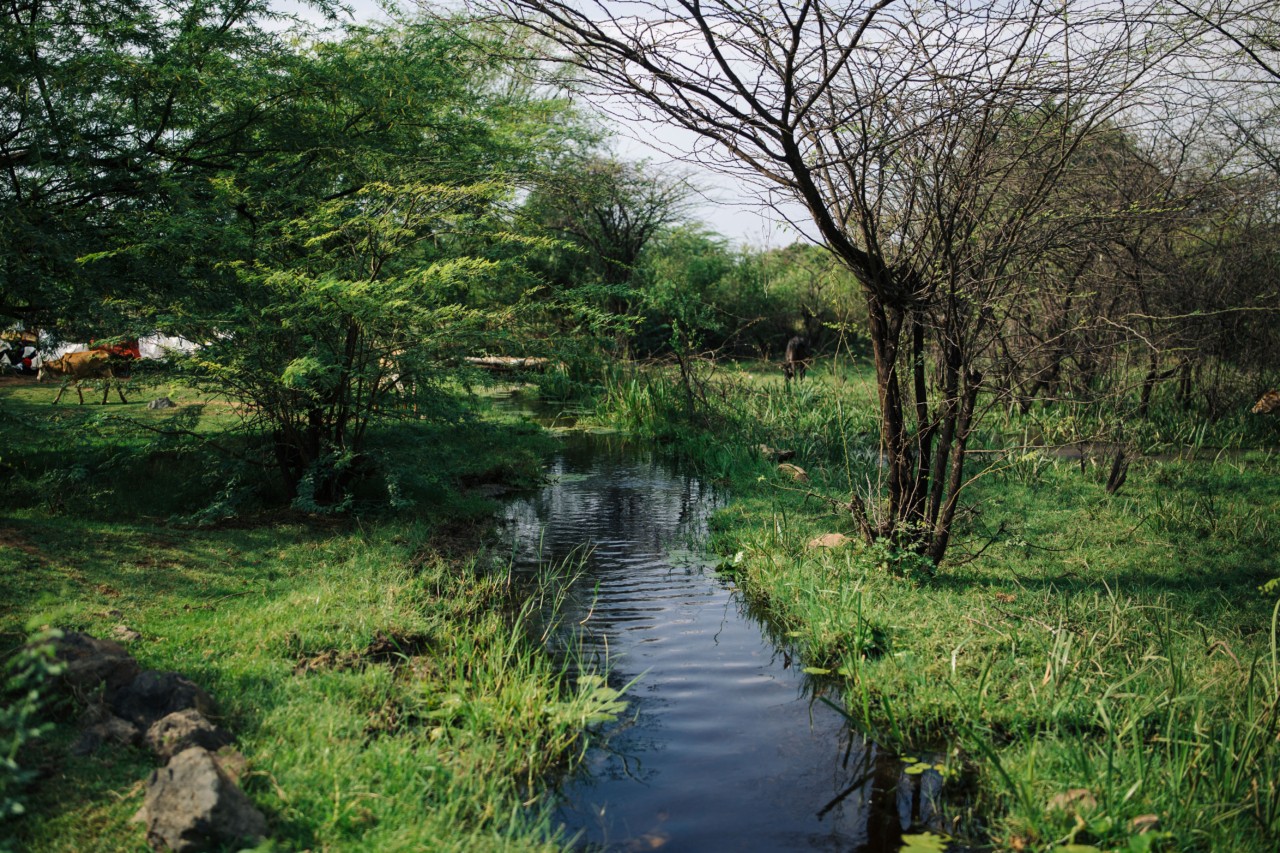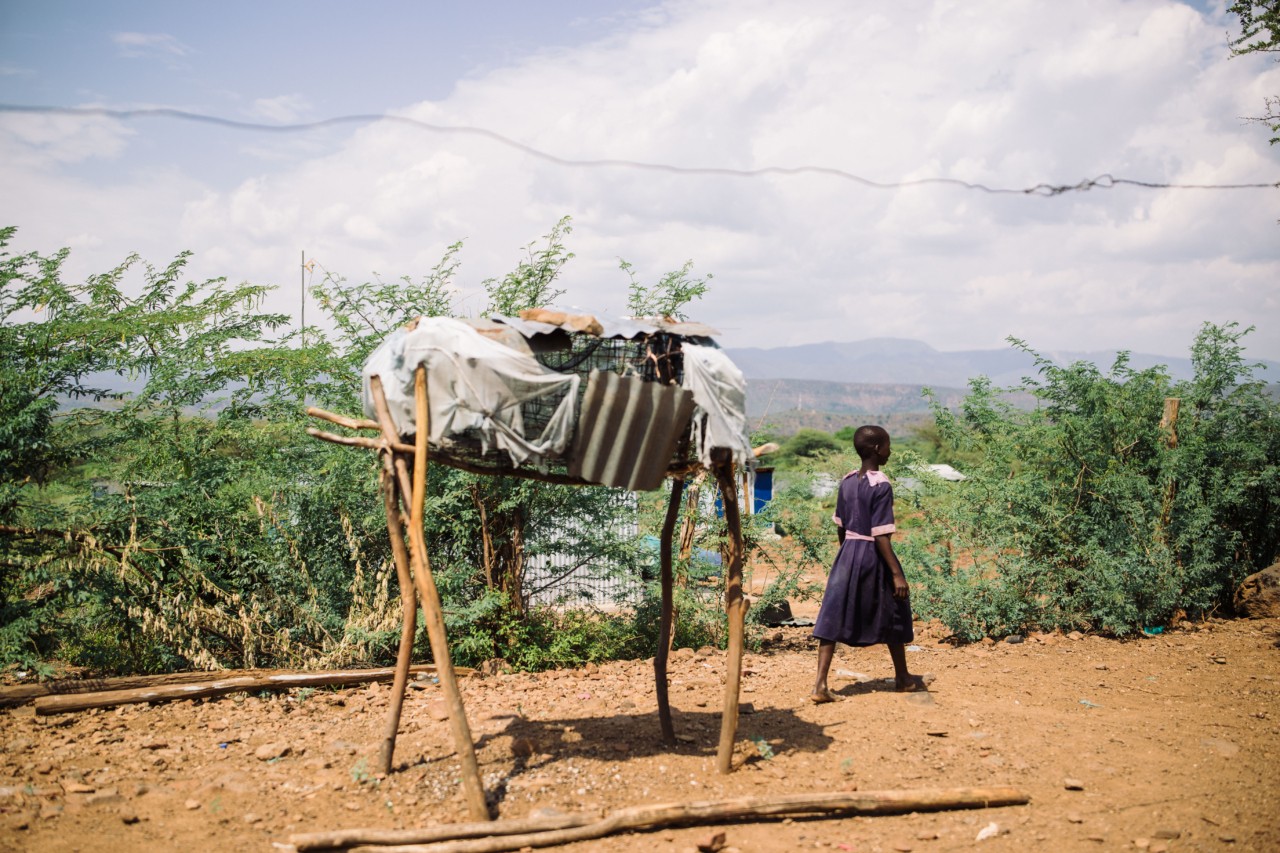

A girl in Kapkuikui overlooks the Great Rift Valley, where malaria infections have ticked upward in recent decades.
WORDS and photographs BY KANG-CHUN CHENG
Peter Lembes remembers shimmying up trees as a five-year-old to forage for Prosopis juliflora, called mathenge in Kiswahili. “We’d hunt for the sugary pods after school to chew—they are so sweet,” recalled Lembes, now 36 and with a family of his own. “There was a scarcity of food then.”
They weren’t alone. Animals crave the seed pods, too. In Kenya’s Great Rift Valley, in counties like Baringo where herding is common, the shrubs are beacons for grazing goats and cattle—humans and nonhumans alike indulging in a natural sugary treat.
But as sweet as it is, mathenge leaves behind a sour taste.
Today, mathenge is one of the most problematic invasive species in tropical regions. It has sprawled across Kenya, from the Great Rift Valley to the coastline. The plant, which is native to Central and South America, spreads at an exponential rate and grows in thick, impassable swaths. Its dense stands obstruct access to natural resources and tap out already limited groundwater supplies.
“It’s one of the most devastating weeds for rangelands and farmers. It makes the soil unusable,” said Tobias Landmann, who researches invasive plants at the International Centre of Insect Physiology and Ecology in Nairobi. Some farmers near the Tana Delta have even abandoned their farms and resorted to fishing.


Mathenge’s pernicious impact bleeds into ecosystems, sickening animals and people, too. Its thorns puncture cattle hooves, and its sweet seed pods rot their teeth, often badly enough to deter them from eating. Simon Chesang, a resident of Kapkuikui in Baringo, estimates that he’s lost 19 cows and 40 of his 120 goats from mathenge over the last three years.
To make matters worse, its dense branches incubate the mosquitoes that spread malaria, the disease that kills more than half a million people, mostly children, worldwide each year. Landmann said that mosquitoes need food, blood meals, and a place to rest when they breed. “Mathenge makes for ideal resting spaces for mosquitoes because it is very dense,” he said.
Kuto Chilumo, a medical parasitologist with Kenya’s Ministry of Health, is based in Marigat, one of Baringo’s up-and-coming market towns. He said that malaria is the region’s “top concern.”
“After the offset of long rains, you will be sure to see many malaria cases for residents around here,” he told me one sunny afternoon, seated at a bench in his lab. Across the country, the disease remains one of the top killers: It infects an estimated 3.5 million people and kills over 10,000 each year.
The relationship between mathenge and malaria is an “unholy union,” said Stalin Kibet, a botanist at the University of Nairobi, in an email. But clear as it is now, nobody anticipated its lasting harm when it was deliberately introduced to Kenya four decades ago.

“It’s one of the most devastating weeds for rangelands and farmers. It makes the soil unusable.”
Starting in the 1980s, NGOs started cultivating mathenge in Baringo County in western Kenya to fight land degradation. The World Bank partnered with Kenya’s Ministry of Environment, rallying local communities to afforest—to plant trees where there previously were none. The idea was to make land, seemingly barren to the untrained eye, “productive.”
At the time, John Kandie, now 70, worked as a driver as part of a county-wide mathenge planting project. “During planting days, I would drive as many as 2,000 to 10,000 mathenge seedlings,” Kandie recalled as we sat on wizened trees in Kapkuikui. “[Mathenge] was introduced to help,” Lembes explained. “In only six or seven months, they were covering the landscape.” But soon, covering turned into smothering.
These days, Baringo has wholly succumbed to mathenge. The areas where the weed took root ballooned from 882 hectares in 1988 to 18,792 in 2016. Where it spread, biodiversity plummeted. “They don’t allow anything to grow underneath it—no grass, no native plants,” Lembes said.
There have been efforts to halt the plant’s invasion. In the early 2000s, a coalition of Indigenous Pokot, Tugen, and Ilchamus communities lodged formal complaints about the damages the tree had wrought on their land. The Ilchamus Council of Elders, on behalf of their community, even sued the national government in 2006, eventually winning their case before the High Court: The Kenyan Minister for Agriculture deemed Prosopis juliflora a “noxious weed” in 2008. Years later, the Ilchamus threatened to sue again after not being compensated for the loss and degradation of their livelihoods. It’s unlikely the government will follow through.




Meanwhile, the Ministry of Environment has introduced workshops to encourage residents to harvest the shrub, converting the wood into jiko, or charcoal. But considering the exponential range expansion of the weed, this strategy merely attenuates an ecological disaster. “It’s totally impossible to eradicate,” said Eva Salve Bacud, a social and agricultural economist at the University of Bonn in Germany.
Chesang, the herder from Kapkuikui, has taken a more DIY approach. In his pastures, he hires people to pull out mathenge sprouts before they can mature, and elsewhere, he logs it and uses the lumber as fencing for his house and fields. But, like many residents, he has mixed feelings about the plant.
“It’s totally impossible to eradicate.”
“I don’t like to complain about mathenge the way some other people do,” said Chesang, belly-laughing. “No! God gave me a head to think for myself.” He’s thought of several resourceful ways to take advantage of the ubiquitous plants. Mathenge blossoms year-round, and Chesang, who is also a beekeeper, believes it helps sustain his hive when the native trees aren’t flowering.
Additionally, he grinds mathenge branches with fodder like acacia pods and hay to feed his cattle, although he insists that meat from mathenge-fed animals becomes unpalatable. “The goats are emaciated, and the meat has a bad smell,” he said. “If you’re at a butchery, you can instantly tell what animals were fed on mathenge.”

Chesang’s ambivalent relationship with the shrub isn’t uncommon. On one hand, some people, like Samuel Derbyshire, an anthropologist at the International Livestock Research Institute in Nairobi, lament the invasive species. In wetlands, where people tend to settle and where mathenge also thrives, it’s seen as a harbinger for strife and unrest. He said that mathenge’s health and environmental impacts are so severe that it has “come to signal moral badness.”
Yet many locals are still delighted to be surrounded by trees. At 80, Thomas Kamarow remembers the time before mathenge. The land was bare, he said. “[Mathenge] acts as a windbreaker now,” he said. It also keeps down the dust from erosion. “The change, it’s not all bad.”
40-year-old Marcella Kibon of Kapkuikui remembers when mathenge was first planted here, too. She’s well aware that the mosquito population and malaria cases have spiked since then. All five of her children have had the disease at least once—most recently, her youngest son Allen, a six-year-old whose high fever required treatment from the clinic. But still, Kibon speaks positively of mathenge.
“This place used to be a desert,” she said, resting beneath the shade of an overgrown mathenge tree, its branches swaying in the breeze. “But now, this place is beautiful.”


The Sour Aftertaste of an Invasive, Sugary Shrub
